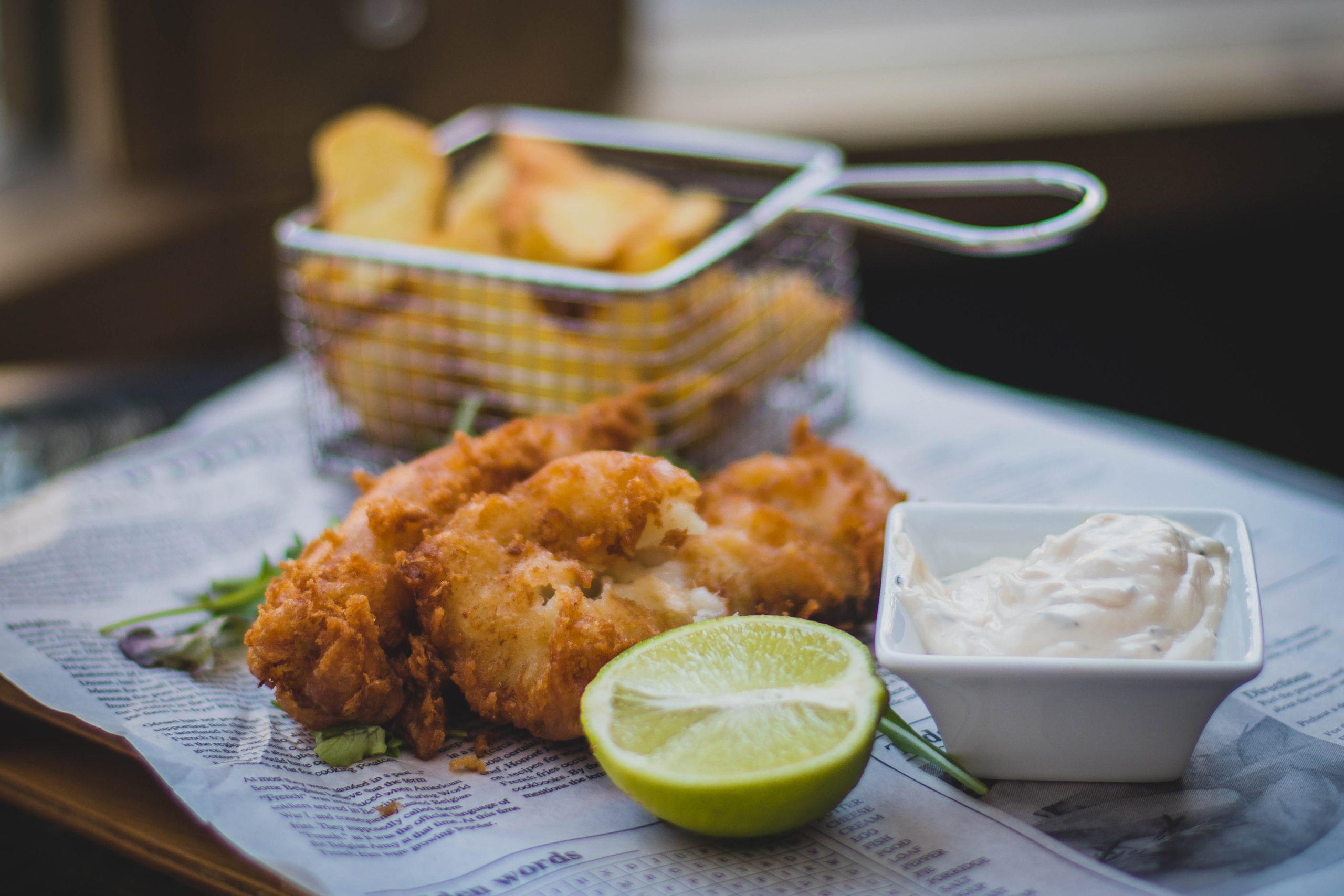With the chill in the air, it’s the perfect time to reshare this post from 2021!
Fall is the perfect time to try some simple science activities with leaves. If you loved our post about leaf rubbings, nature treasures, and fall discovery tables, you’ll love these ideas, too.
Fall Science Activities with Leaves
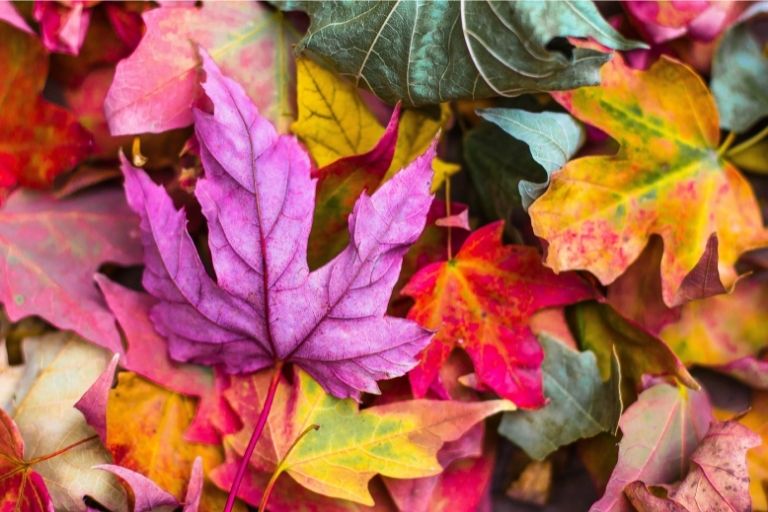
Observe Leaves Releasing Oxygen
Place a fresh, green leaf into a bowl of water. (Make sure the leaf is under the water.) Set it in a sunny location.
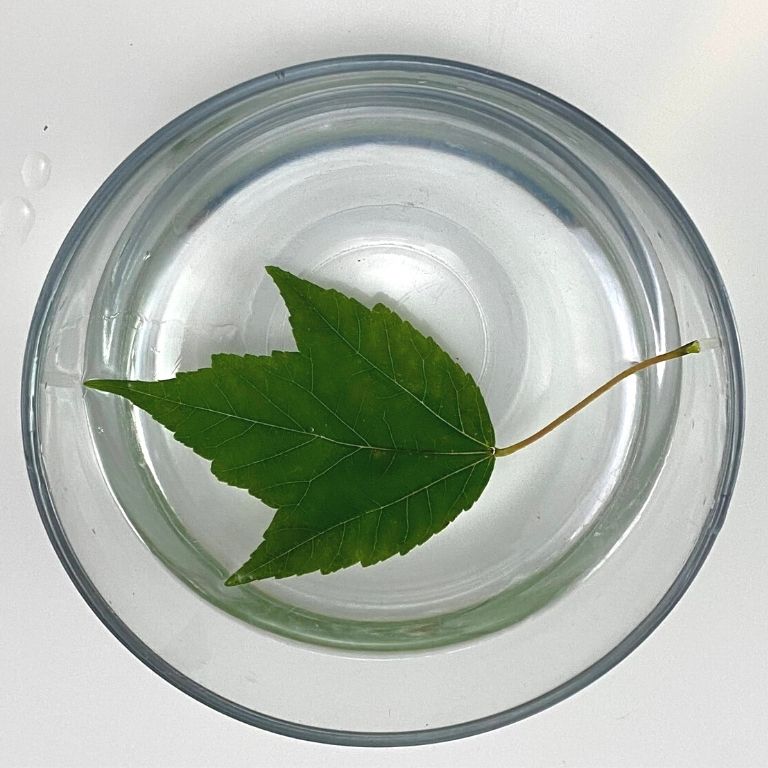
You’ll begin to see tiny bubbles appear on the surface of the leaf. Check back in about an hour to see even more bubbles. Be sure to look on the underside of the leaf as well. We saw little pockets of oxygen there.
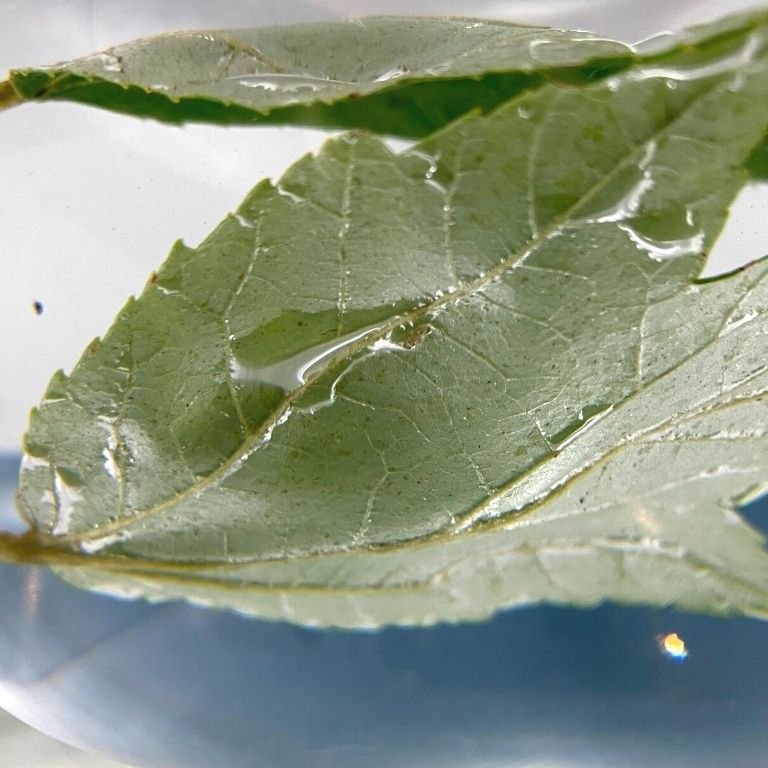
What’s happening?
The plant is doing photosynthesis – using carbon dioxide and water to produce oxygen and sugar. The bubbles we’re seeing are the oxygen being produced by the plant. Try this in the dark and see how much oxygen is produced. (Photosynthesis requires sunlight, so you shouldn’t see any bubbles of oxygen in the dark.)
This only works with a living leaf – fresh from a tree or plant. Try this with a fresh, fall leaf (red, yellow, etc.). Do you see as many bubbles? (You probably won’t see many bubbles at all since the chlorophyll in the leaves has left and the plant is no longer doing photosynthesis.)
Observe Leaf Transpiration
Place a plastic bag over the leaves of a tree and secure the bag so it won’t fall off or fly away.
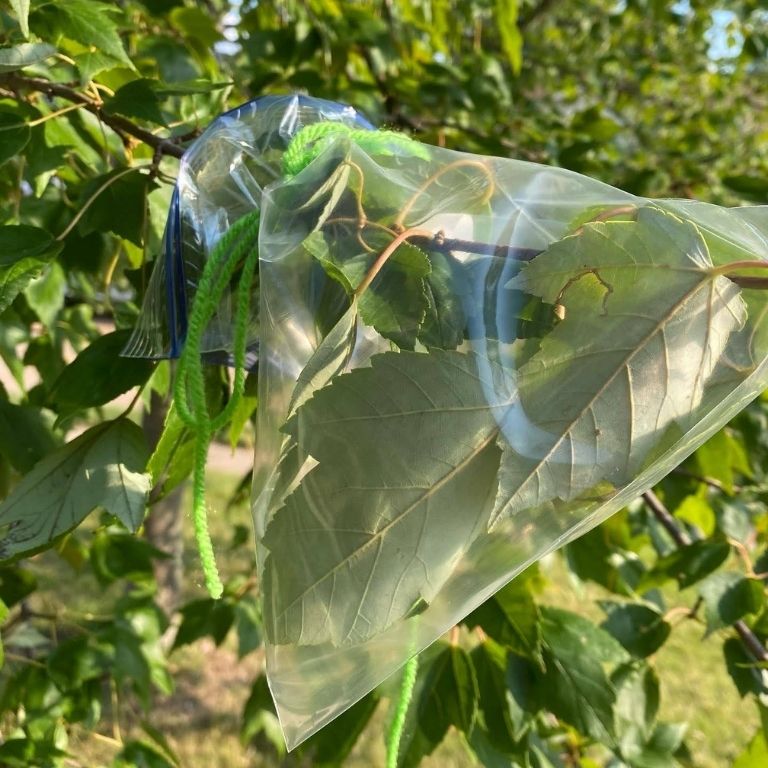
Check back in a while and see what the bag looks like. We took the photo below about 90 minutes after the first.
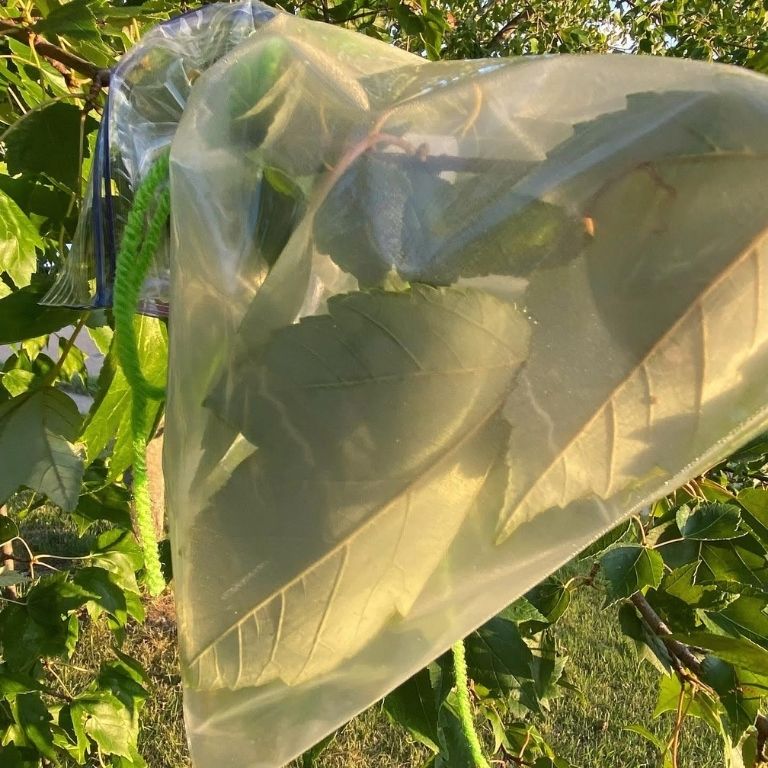
Notice the moisture appearing inside the bag. It was a sunny day, so transpiration was occurring pretty quickly.
Test out different weather conditions and temperatures. Does the transpiration rate change?
What’s happening?
Transpiration is water vapor leaving the leaves and other plant parts. It’s the evaporation of water off of the plant. Water vapor exits through little holes in the leaves. It helps move water through the plant from the roots to the leaves.
You can trap this water vapor inside the bag. It will eventually condense and pool in the bottom of the bag as liquid water.
See the Different Colors in Leaves
Leaves have different pigments (or colors). The green pigment is called chlorophyll – its job is to collect sunlight. Leaves have other pigments in them as well. We followed Share It! Science’s instructions to see the hidden colors in a leaf.
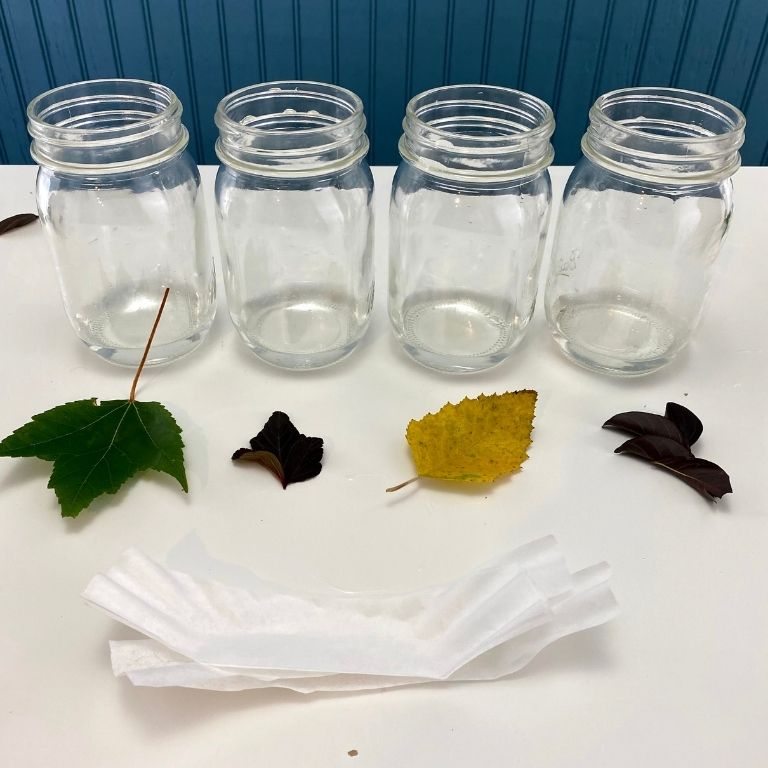
Gather a few different leaves. Crush them up and place each type in a container.
Add 2 tablespoons of water and 2 tablespoons of alcohol to each container.
Cut strips of coffee filters and place them in the containers, so the filter is barely touching the water.
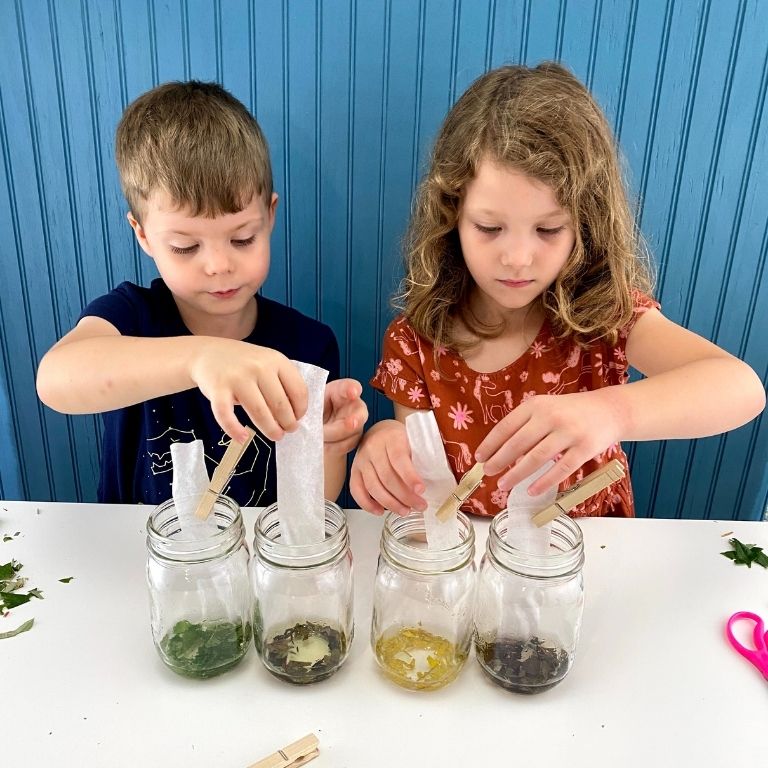
Wait for the colored water to move up the coffee filter. (This will take a while.)
The colors that make up the leaves should separate as they travel up the coffee filter.
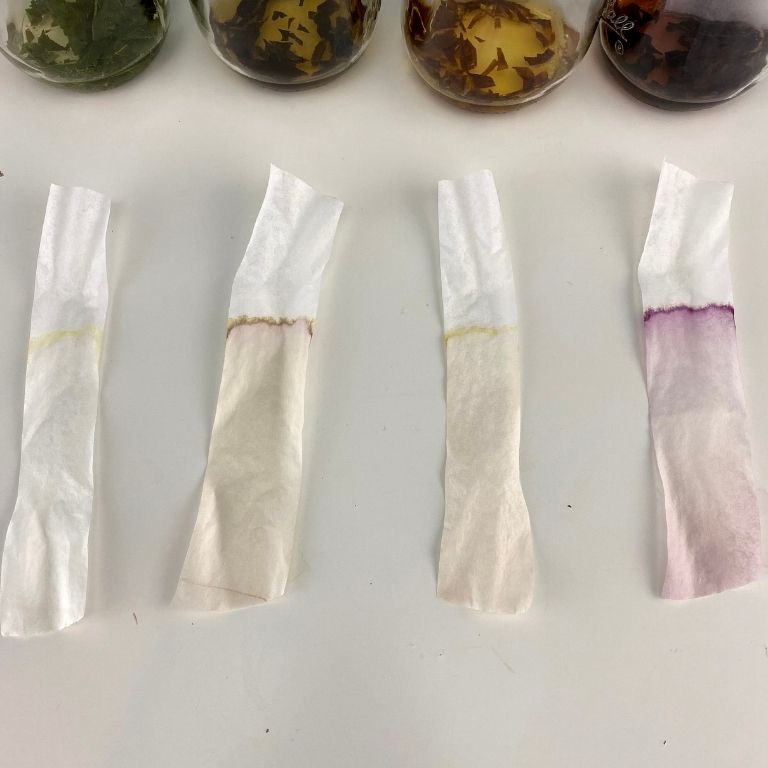
What other leaf investigations have you tried?








